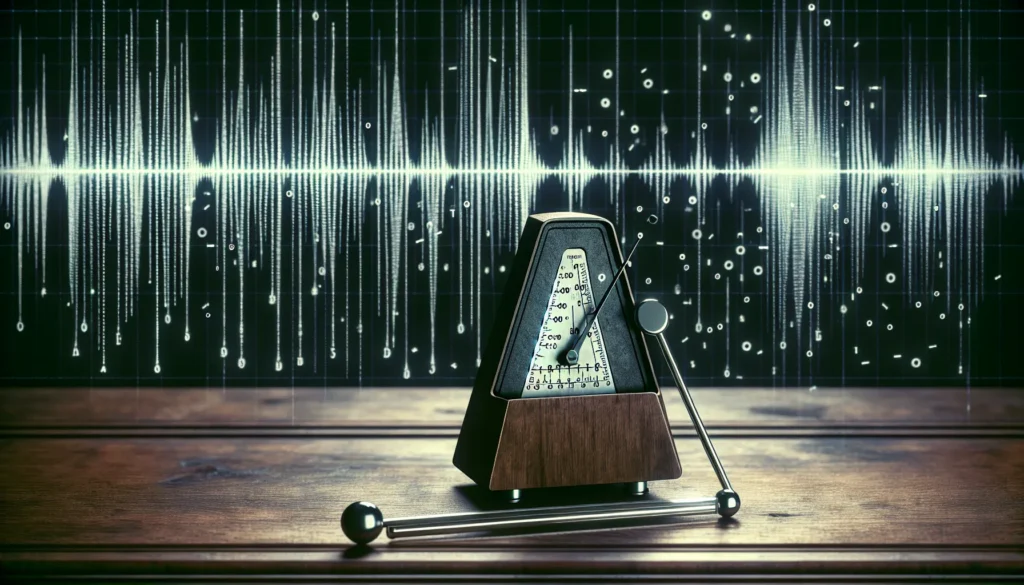Key Takeaways
- “Hi” in Morse code is “…. ..” (H = four dots, I = two dots) using International Morse (ITU‑R M.1677‑1).
- Timing matters: dot = 1 unit, dash = 3 units, 1-unit gaps within letters, 3 units between letters, 7 units between words.
- Send it by sound (taps/beeps), light (flashes), or text (dots and dashes) while keeping a steady unit length.
- Common mistakes: compressing the 3‑unit letter gap, uneven tempo, or miscounting H (4 dots) and I (2 dots).
- Quick practice tip: use a metronome (e.g., 60–100 ms per unit), repeat “…. ..” in sets, and verify spacing visually or by recording.
I love simple ways to spark curiosity. Morse code turns words into dots and dashes. Saying hi with it feels like a secret handshake.
In this quick guide I’ll show how to send hi by sound light or taps. You’ll learn the basic signals and timing. I’ll keep it easy and fun so you can greet anyone like a radio pro.
What Is Morse Code?
I describe Morse code as a symbolic system that encodes text into dots and dashes for transmission over sound, light, or radio. I use it to say hi and other words with precise timing and rhythm. I follow International Morse which the ITU standardizes in Recommendation ITU‑R M.1677‑1.
- Defines each character with a unique pattern of short and long signals
- Uses sound light and radio for simple and robust signaling
- Encodes letters A B C and digits 0 1 2 plus punctuation like period question mark and slash
- Supports clear word separation for phrases like say hi in Morse code
I note the core timing units here because timing makes Morse readable.
| Element | Duration in units | Example context |
|---|---|---|
| Dot | 1 | H in hi uses four dots |
| Dash | 3 | A uses dot dash |
| Gap within a letter | 1 | Between dots in H |
| Gap between letters | 3 | Between H and I |
| Gap between words | 7 | Between say and hi |
I trace its origin to Samuel F. B. Morse and Alfred Vail in the 1830s for telegraph lines, and I use the international revision adopted by the ITU in 2009 for modern practice. I match the standard character set and timing so a simple hi sounds like four short then two short.
Sources: ITU‑R M.1677‑1 International Morse code 2009, ARRL Handbook for Radio Communications 2024, National Institute of Standards and Technology historical notes on telegraphy.
The Code For “Hi”: H And I Explained

I use International Morse to say hi with two letters. I map H to four dots and I to two dots per ITU-R M.1677-1.
The Letter H: ….
I send H as four short signals. I keep each dot at 1 unit per ITU timing rules (source, ITU-R M.1677-1).
- Tap four times, keep 1-unit gaps between taps
- Flash four times, keep 1-unit gaps between flashes
- Beep four times, keep 1-unit gaps between beeps
The Letter I: ..
I send I as two short signals. I keep each dot at 1 unit, with 1-unit gaps between dots (source, ITU-R M.1677-1).
- Tap twice, keep 1-unit gap between taps
- Flash twice, keep 1-unit gap between flashes
- Beep twice, keep 1-unit gap between beeps
Putting It Together: “Hi” = “…. ..”
I say hi in Morse code as “…. ..”. I keep a 3‑unit letter gap between H and I, and I keep 1‑unit gaps inside each letter (sources, ITU-R M.1677-1, ARRL).
| Letter | Pattern | Dots | Dashes | In-letter gaps | Total units, no letter gap |
|---|---|---|---|---|---|
| H | …. | 4 | 0 | 3 | 7 |
| I | .. | 2 | 0 | 1 | 3 |
How To Say Hi In Morse Code

I send hi in Morse code as four dots then a space then two dots. I follow ITU-R M.1677-1 timing so each element keeps clear spacing.
| Element | Duration (units) |
|---|---|
| Dot | 1 |
| Dash | 3 |
| Gap between dots and dashes in a letter | 1 |
| Gap between letters | 3 |
| Gap between words | 7 |
Source: ITU-R M.1677-1
Pattern for hi: H = …. I = .. so hi = …. ..
With Sound (Taps Or Beeps)
I use a metronome or timer for a steady unit. I pick 100 ms as 1 unit if I want a quick pace.
- Set a base unit length
- Tap a short beep for a dot
- Pause 1 unit inside a letter
- Send H as dot dot dot dot
- Pause 3 units between letters
- Send I as dot dot
- Repeat the whole sequence for practice with a constant unit
Examples: desk taps, key clicks, tone beeps.
With Light (Flashes)
I use a flashlight or phone screen for visual Morse. I keep the same unit timing for consistency.
- Set a dark background for contrast
- Flash a short light burst for a dot
- Pause 1 unit inside a letter
- Send H as four short flashes
- Pause 3 units between letters
- Send I as two short flashes
Examples: LED lantern, bike light, camera flash.
With Text (Dots And Dashes)
I type dots and dashes and keep spacing visible for clarity.
- Type H as ….
- Add one space to mark the 3 unit letter gap
- Type I as ..
- Use a forward slash for a 7 unit word gap if I add words
Examples: SMS, chat, terminal.
Timing And Spacing Basics

I match timing to keep Morse clear. I space signals so “hi” reads as “…. ..” without guesswork.
Dot, Dash, And Pause Lengths
I base every element on units, per ITU-R M.1677-1 for International Morse (ITU, 2009). I use 1 unit for a dot, 3 units for a dash, 1 unit between dots and dashes in a letter, 3 units between letters, 7 units between words (ARRL, ITU).
- Set dot length to 1 unit for H and I examples.
- Set dash length to 3 units for letters with dashes, for example A or T.
- Set intra-letter gaps to 1 unit for H and I internals.
- Set inter-letter gaps to 3 units for H to I spacing in “hi”.
- Set word gaps to 7 units for phrases, for example “hi there”.
I time “hi” as four dots, gap, two dots. I keep 1-unit gaps inside each letter and a 3-unit gap between H and I.
Numbers for common speeds
| Speed (WPM) | Dot 1 unit (ms) | Dash 3 units (ms) | Intra-letter gap 1 unit (ms) | Inter-letter gap 3 units (ms) | Word gap 7 units (ms) |
|---|---|---|---|---|---|
| 15 | 80 | 240 | 80 | 240 | 560 |
| 20 | 60 | 180 | 60 | 180 | 420 |
| 25 | 48 | 144 | 48 | 144 | 336 |
I pick one speed and keep it steady. I use a metronome or sidetone to lock the unit length across dots, dashes, and gaps (ARRL).
Sources: ITU-R M.1677-1, International Morse Code, 2009. ARRL Operating Manual, Morse timing, current edition.
Common Mistakes And Quick Tips
Common mistakes in saying hi in Morse code come from timing gaps and symbol mix ups. Quick tips tighten rhythm and keep the Morse hi clear.
Quick reference units
| Element | Units | Example |
|---|---|---|
| Dot | 1 | H dot count 4 |
| Dash | 3 | Not used in hi |
| Gap between dots or dashes within a letter | 1 | H uses 1 between dots |
| Gap between letters | 3 | Between H and I |
| Gap between words | 7 | After hi if a sentence follows |
Frequent errors
- Mix H and I by sending 3 dots for H
- Collapse the 3 unit gap between H and I
- Drift unit length across the 6 dots
- Add extra silence after each dot inside H
- Use uneven light or beep amplitude
- Type dots without a clear space between letters in text
- Count by feel instead of a set tempo
Quick tips
- Count 1 for each dot and count 1 2 3 for the letter gap
- Practice with 12 WPM and a 60 ms dit if I use Farnsworth timing
- Tap or flash at one spot and keep cadence steady
- Start H as dot dot dot dot and then pause 3 units and then send I as dot dot
- Log 5 runs and compare dot counts to catch drift
- Mark letter gaps in text as two spaces like …. ..
- Follow the ITU pattern and keep consistency over speed
Practice Scenarios To Build Confidence
I use practice scenarios to build confidence with saying hi in Morse code.
- Practice H as four dots with 1-unit gaps then add a 3-unit gap then send I as two dots.
- Practice taps on a desk at 60 bpm using a metronome app then switch to 80 bpm for faster pacing.
- Practice light flashes with a phone flashlight in a dark room then repeat in daylight for contrast control.
- Practice beeps with a tone generator at 600 Hz through earbuds then try 800 Hz through speakers.
- Practice text by typing …. .. with a 3-space letter gap then add slashes for words like …. .. / …. …
- Practice listening by clapping H as four short sounds then pausing 3 units then clapping I as two short sounds.
- Practice rhythm by counting 1 for dots and 1 2 3 for the letter gap then restart the count for I.
- Practice recovery by restarting the word after any timing slip then finish the pattern cleanly.
Partner And Real-World Drills
- Practice turn taking with a partner using alternating greetings like …. .. and …. . in two-minute sets.
- Practice distance by sending light from 10 ft then 30 ft then 100 ft across a field at night.
- Practice noise control by tapping on wood then metal then plastic to hear attack differences.
- Practice clarity by cupping the flashlight lens for dots then holding steady longer for dashes in mixed words.
- Practice context by sending hi at the top of a minute during quiet periods if ambient noise spikes.
- Practice fatigue by running five back-to-back rounds then logging any drift in unit length.
Progress Ladder
I track simple numbers to lock timing.
| Day | Mode | Task | Reps | Target unit length |
|---|---|---|---|---|
| 1 | Tap | …. .. at 60 bpm | 20 | 1 beat |
| 2 | Light | …. .. at 60 bpm | 20 | 1 beat |
| 3 | Audio | …. .. at 80 bpm | 25 | 0.75 beat |
| 4 | Mixed | Tap, light, audio | 30 | Match across modes |
| 5 | Copy | Decode partner sends | 30 | 95% accuracy |
Stretch Challenges
- Practice blindfolded taps to focus on sound if visual cues cause hesitation.
- Practice glove taps for reduced sensitivity if finger fatigue appears.
- Practice windy outdoor light sends if indoor drills feel too easy.
- Practice background music at low volume if silence no longer stresses timing.
- Practice random intervals between attempts if predictability reduces attention.
Conclusion
I hope this sparked your curiosity and gave you a playful way to say hi with style. Morse code feels like a secret handshake you can use anywhere and it never gets old. Keep it light keep it fun and let your rhythm do the talking.
Take a minute today and send a quick hi to someone you know. Try it with a tap or a blink or a gentle beep. Share your wins and your slip ups too. If you enjoyed this let me know what you want to learn next. I love hearing how you make these tiny signals part of your daily life.
Frequently Asked Questions
What is Morse code?
Morse code is a system that turns letters, numbers, and punctuation into short and long signals: dots and dashes. Each character has a unique pattern. When you follow standard timing (dot, dash, and gap lengths), messages can be sent clearly by sound, light, or taps. The modern reference is the International Morse standard (ITU-R M.1677-1).
How do I send “hi” in Morse code?
“hi” is “…. ..”. H is four dots (….). I is two dots (..). Use a 3-unit gap between the letters: “…. ␣␣␣ ..”. Keep 1-unit gaps between dots within each letter.
What are the basic timing rules?
- Dot = 1 unit
- Dash = 3 units
- Gap between parts of a letter = 1 unit
- Gap between letters = 3 units
- Gap between words = 7 units
Consistent unit length is crucial for readability.
What speed should beginners use?
Start at 10–15 WPM with Farnsworth spacing (fast character speed, longer gaps). This helps you hear each character cleanly while keeping an easy overall pace. Gradually shorten gaps as your accuracy improves.
How do I send “hi” with sound?
Tap, beep, or click four short pulses for H, pause 3 units, then two short pulses for I. Keep each dot equal length and use a steady rhythm. A metronome app can help you maintain even timing.
How do I send “hi” with light?
Flash a light (flashlight or phone screen) four short blinks for H, pause 3 units, then two short blinks for I. Hold each blink the same short length, and keep the pauses accurate for clarity.
How do I write “hi” as text in Morse?
Write it as “…. ..” with a clear space between letters. Avoid extra spaces inside a letter. For clarity in plain text, use a single space between letters and a slash (/) between words if needed.
What are common mistakes to avoid?
- Uneven dot lengths
- Too-short or too-long gaps between letters
- Mixing dots and dashes
- Rushing the 3-unit letter gap
Stick to consistent units and review “…. ..” after sending to spot timing slips.
Why is timing more important than speed?
Correct spacing defines each character. Even at slow speeds, precise 1-, 3-, and 7-unit gaps keep your message readable. Speed without timing creates confusion; timing with consistency builds accuracy and confidence.
Who created Morse code and what’s the current standard?
Samuel F. B. Morse and Alfred Vail developed Morse code in the 1830s. Today, the International Telecommunication Union (ITU) maintains the modern standard, documented in ITU-R M.1677-1, ensuring consistent timing and symbols worldwide.
Do I need special equipment to send “hi”?
No. You can use a finger tap, pen on a table, a beeper app, or a flashlight. A metronome or timer helps keep units consistent. As you improve, optional tools like practice apps or keys can help.
How can I practice and track progress?
Practice daily: tap “…. ..” in sets, then mix with other letters. Use a metronome for steady units, record yourself, and listen back. Raise WPM gradually, reduce gaps over time, and track accuracy before increasing speed.



